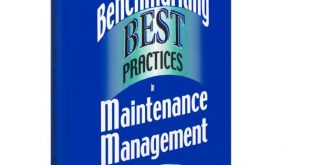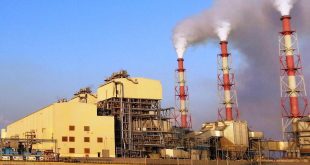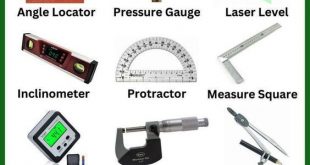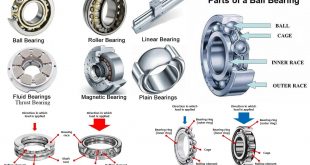Knots An Illustrated Practical Guide to the Essential Knot Types and Their Uses by Andrew Adamides. Knots have been an essential part of human history, serving as indispensable tools for survival, exploration, and trade. From the time of early seafarers who relied on knots to navigate treacherous waters to modern-day adventurers who depended on them for securing equipment, knots have …
Read More »Benchmarking Best Practices in Maintenance Management
Benchmarking Best Practices in Maintenance Management by Terry Wireman. Maintenance is a unique business process. It requires an approach that is different from other business processes if it is to be successfully managed. The purpose of this book is to present insight into what is required to manage maintenance. The book cannot provide a complete answer to every maintenance management …
Read More »Understanding Air Pollution Emissions and Flue Gas Emission Standards in Boiler Combustion
Introduction: Boilers are widely used in industries and households for various purposes, including heating, power generation, and industrial processes. However, the combustion of fuels in boilers can release harmful pollutants into the atmosphere, contributing to air pollution and its associated health and environmental impacts. In this blog post, we will delve into the topic of air pollution emissions and flue …
Read More »Occupational Health and Safety Law Text and Materials
Occupational Health and Safety Law Text and Materials 2nd edition by Brenda Barrett. This text aims to provide assistance to students of occupational health and safety law. It is designed to be useful for both undergraduate and postgraduate students who are interested in this field. The book’s content is also intended to serve as a valuable reference for safety management …
Read More »Office Building Safety and Health
Office Building Safety and Health by Charles D. Reese. This book has been created to serve as a comprehensive guide for safety professionals, students, and employers involved in ensuring occupational safety and health within office buildings. Its primary objective is to provide a step-by-step framework for implementing effective safety and health measures within office buildings. Given that a significant portion …
Read More »RO Plant Reverse Osmosis System
Introduction When it comes to obtaining clean and purified water, the reverse osmosis (RO) system is a popular choice for many households and industries. Reverse osmosis utilizes a fascinating process to remove impurities and contaminants from water, providing high-quality drinking water and various industrial applications. In this article, we will explore the principle of reverse osmosis, the recovery ratio of …
Read More »Types of Measuring Tools
Types of Measuring Tools Measuring tools are essential for precise and accurate measurements in various industries and everyday tasks. They enable us to quantify dimensions, angles, levels, depths, volumes, temperatures, and more. From construction and engineering to cooking and crafting, different types of measuring tools serve specific purposes, ensuring accuracy and efficiency. In this article, we will explore the various …
Read More »Valve Designers Handbook
Lyons valve designers handbook by Jerry L Lyons. In this book, the aim is to provide a comprehensive collection of materials that will assist valve designers in their work. Many engineers spend a significant amount of time researching specifications and gathering data to perform calculations related to flow rates, pressure drops, material compatibility, fasteners, seals, packings, and other system requirements. …
Read More »Trenching and Excavation Safety
Trenching and Excavation Safety by OSHA. Trenching and excavation operations pose significant risks and are considered some of the most hazardous activities in construction. To mitigate these dangers, the Occupational Safety and Health Administration (OSHA Training Course) has established strict guidelines and regulations for such operations under 29 Code of Federal Regulations (CFR) Part 1926, Subpart P. This booklet aims …
Read More »Introduction to Internal Combustion Engines
Introduction to Internal Combustion Engines by Richard Stone. This book aims to provide students and engineers with the background pre-supposed in many articles. papers and advanced texts. This book is designed to provide a comprehensive introduction to the theory, design, and operation of internal combustion engines, one of the most important technological innovations of the modern era. In this book, …
Read More »Thermodynamics Combustion and Engines
Thermodynamics, combustion, and engines are fundamental topics in the field of mechanical engineering. The study of thermodynamics involves the analysis of energy transfer and conversion between various forms, while combustion deals with the chemical reactions that occur during the burning of fuels. Engines are devices that utilize thermodynamics and combustion to produce useful work. This book, written by Brian E. …
Read More »Types of Bearings and Their Applications
Bearings are mechanical components that reduce friction between moving parts and support loads. They come in various shapes and sizes, and each type has unique features and applications. In this blog post, we’ll discuss the most common types of bearings and their applications to help beginners understand their functions and uses. Ball Bearings: Ball bearings are the most commonly used …
Read More » Boilersinfo Boiler and Mechanical Power Digital Library
Boilersinfo Boiler and Mechanical Power Digital Library











